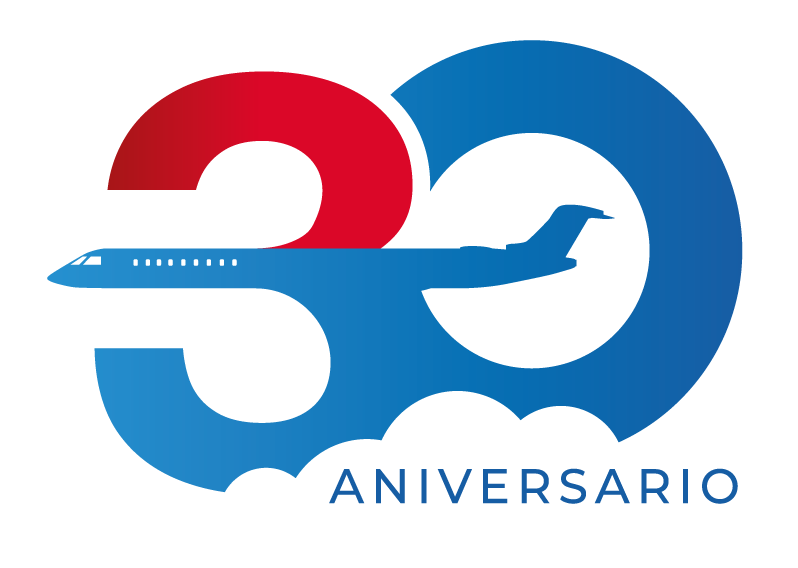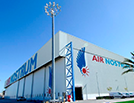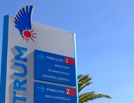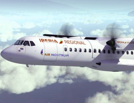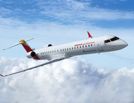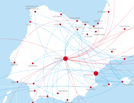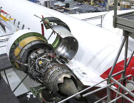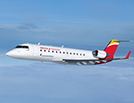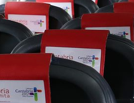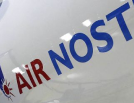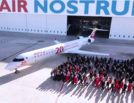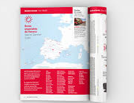History

Air Nostrum was established on 23rd May, 1994. The initial six staff member team was joined, over the months, by other staff members eventually creating the 100-member team responsible for setting up Spain’s first private regional aviation project.
On 15th December, 1994, the company’s initial Fokker 50 turboprop aircraft took off on an inaugural flight from Valencia to Bilbao with 16 passengers aboard under the flight code YW251.
In January, 1995, the company launched the first phase of its flight operations with a fleet of three Fokker 50 turboprop regional aircraft.
During the summer of 1995, the company finalised the second phase of its flight operations with the acquisition of four additional aircraft. It continued to operate with a fleet of seven Fokker 50 aircraft up until the end of 1996 when it completed the third phase of its flight operations with the incorporation of an additional 10 Fokker 50 aircraft along with four new 68-seater ATR72 twin-engine turboprop aircraft acquired for service on flight routes with a higher passenger demand.
In May, 1997, it signed a franchise agreement with the Iberia Group thereafter becoming known as “Iberia Regional Air Nostrum”.
In 1998, the company continued to build its aircraft fleet with the acquisition of a 50-seater CRJ200ER regional jet model for use on longer distance national and international flight routes.
In the year 2000, Air Nostrum signed a purchase agreement in the sum of 800 million euros for the purchase of 44 new aircraft providing it with Europe’s most modern regional aviation aircraft fleet.
In February, 2001, it introduced the first of its 50-seater Dash8-Q300 turboprop aircraft as part of a plan to replace its aging fleet of Fokker 50 turboprop aircraft.
In December, 2005, the company presented the 90-seater CRJ900 regional jet model followed, in December, 2010, by the 100-seater CRJ1000 model and, in the summer of 2012, the 72-seater ATR72-600 regional aircraft model.
In May, 2014, Air Nostrum finalised a capital increase operation with the institution of a new group of shareholders.
Air Nostrum has, since the 2009 economic crisis, worked hard on a restructuring scheme. The introduction of higher capacity aircraft has permitted a reduction in flights without affecting the number of passengers. Air Nostrum carried out an ambitious plan, in conjunction with the Iberia Group, to reduce excess capacity and improve connectivity at the Adolfo Suarez Madrid-Barajas Airport.
Air Nostrum is presently focussed on its core business:
- Domestic connection flights to and from Madrid.
- International connection flights to and from Madrid.
- Niche markets and PSO (Public Service Obligation) flight routes.
As a result of the crisis generated by the COVID-19 pandemic, on June 23, 2022, a Temporary Public Financial Support Agreement and a Financing Contract were signed within the scope of the fund for strategic companies (Fondo Estatal de Apoyo a la Solvencia de las Empresas Estratégicas), managed by the Spanish state holding company Sociedad Estatal de Participaciones Industriales (SEPI).
The financial aid has been fully used towards an equity loan granted to Air Nostrum L.A.M., S.A.U. dated June 23, 2022, pursuant to the provisions of clause 2.4 of the Financing Contract, which includes, among other items, the following: covering the working capital needs for payroll and social security expenses, taxes, operating costs, debt repayment and other disbursements provided for in the Ecological Transition Strategic Plan contained in the Viability Plan. This Strategic Plan comprises four main strategic lines: climate change and decarbonisation, circular economy and waste management, energy efficiency and consumption reduction, and good governance and corporate ethics. These strategic lines respond to the social and environmental challenge posed by climate change and the requirements of the aviation industry, in line with EU objectives such as aiming to be climate-neutral by 2050. The commitment to SAF, as well as opting for operational and energy efficiency projects, along with digital transformation and life-cycle initiatives help advance the strategic plan for sustainable growth. Of the amount received, 85% of the funds already used have been allocated to payments arising from the operational activity, while the remaining 15% has been committed to non-operational payments.

